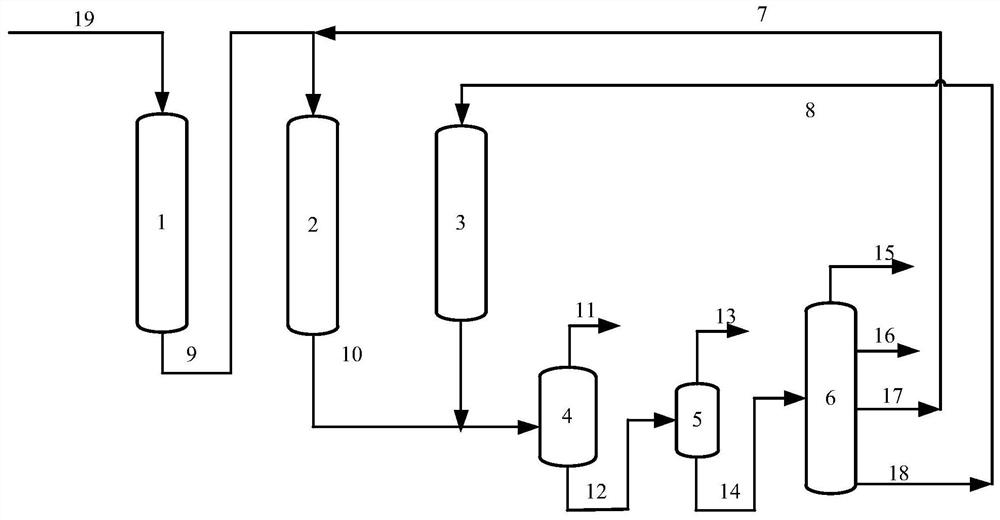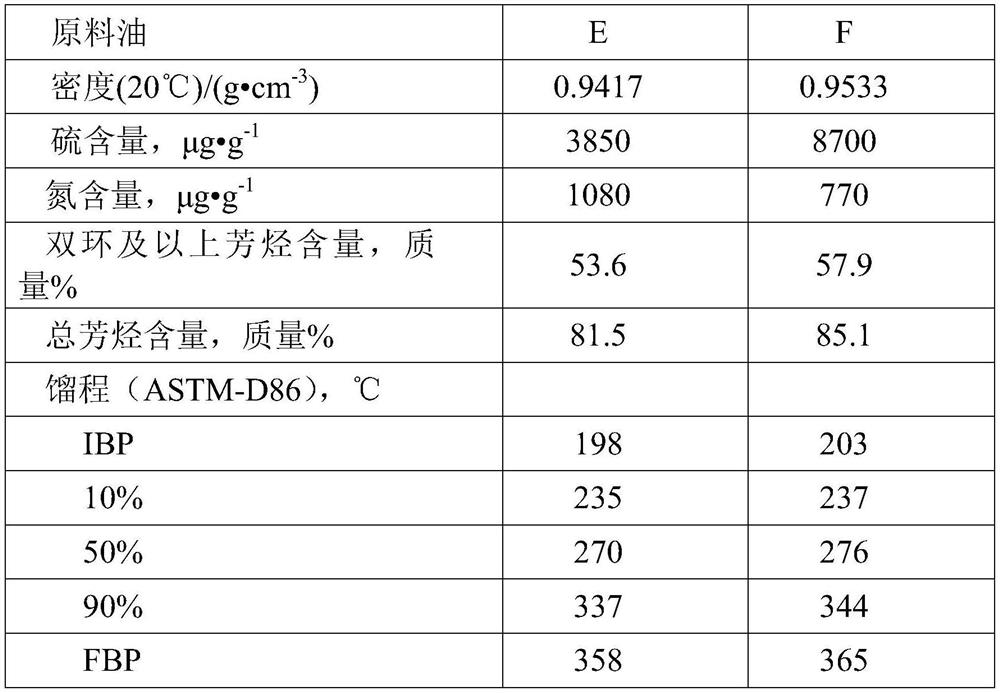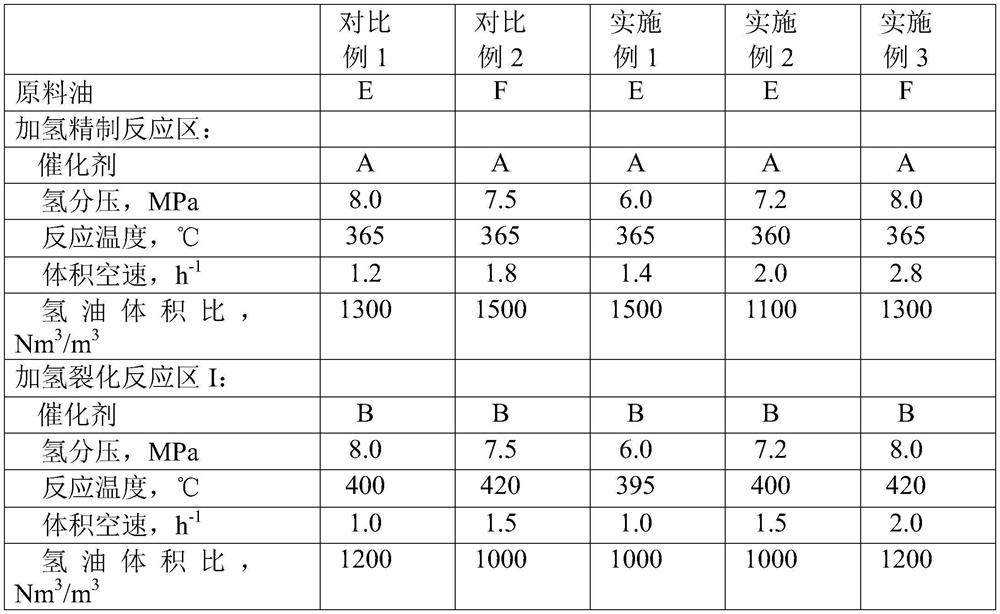Hydrocracking method for producing high-octane gasoline
A technology of hydrocracking and hydrofining reaction, which is applied in hydroprocessing process, petroleum industry, and hydrocarbon oil treatment, and can solve the problems of loss of aromatics and unmaximized utilization of aromatics
- Summary
- Abstract
- Description
- Claims
- Application Information
AI Technical Summary
Problems solved by technology
Method used
Image
Examples
preparation example Construction
[0048] The preparation process of the second hydrocracking catalyst C is as follows:
[0049] First, the Y molecular sieve in the second hydrocracking catalyst C is prepared by multiple dealumination and three times of water roasting:
[0050] (1) Use NaY zeolite as raw material to exchange with ammonium chloride solution. The treatment conditions are: according to the ratio of NaY molecular sieve (dry basis): ammonium chloride: water = 1:0.7:10, exchange at 85°C for 1h, filter Afterwards, it was washed with deionized water and dried at 120°C for 4 hours.
[0051] (2) The molecular sieve obtained in the step (1) is subjected to the first hydrothermal calcination treatment, the calcination temperature is 600° C., and the calcination is carried out under 100% water vapor atmosphere for 2 hours.
[0052] (3) The molecular sieve obtained in step (2) is according to the ratio of molecular sieve (dry basis): citric acid: sulfuric acid: water = 1: 0.15: 0.05: 8, first add water to t...
Embodiment 1
[0072] The raw material oil E enters the hydrotreating reaction zone together with hydrogen, and reacts with the hydrofinishing catalyst A, and the reaction effluent from the hydrofining reaction zone enters the hydrocracking reaction zone I together with the middle distillate, and reacts with the first hydrocracking catalyst B contact reaction. The reaction effluent from hydrocracking reaction zone I enters separation facilities such as high-pressure separator I, low-pressure separator, and fractionation tower in turn, and obtains dry gas, liquefied gas, gasoline fraction, middle distillate and tailings after cooling, gas-liquid separation, and fractionation. The cut point for oil fraction, middle distillate and tail oil fraction is 280°C. The content of aromatics in the middle distillate is 78% by weight, and the content of single-ring aromatics in alkylbenzenes and tetrahydronaphthalenes is 68% by weight; wherein the middle distillate is all recycled to the hydrocracking re...
Embodiment 2
[0075] The raw material oil E enters the hydrotreating reaction zone together with hydrogen, contacts and reacts with the hydrofinishing catalyst A, and the reaction effluent and the middle distillate from the hydrofining reaction zone enter the hydrocracking reaction zone I, and react with the first hydrocracking catalyst B contact reaction. The reaction effluent from hydrocracking reaction zone I enters separation facilities such as high-pressure separator I, low-pressure separator, and fractionation tower in turn, and obtains dry gas, liquefied gas, gasoline fraction, middle distillate and tailings after cooling, gas-liquid separation, and fractionation. The cut point of the oil fraction, the middle distillate and the tail oil fraction is 290° C., the content of aromatics in the middle distillate is 76% by weight, and the content of single-ring aromatics of alkylbenzenes and tetralins is 68% by weight. The middle distillates are all recycled to the hydrocracking reaction zo...
PUM
| Property | Measurement | Unit |
|---|---|---|
| Cell constant | aaaaa | aaaaa |
| Specific surface area | aaaaa | aaaaa |
Abstract
Description
Claims
Application Information
 Login to View More
Login to View More - R&D
- Intellectual Property
- Life Sciences
- Materials
- Tech Scout
- Unparalleled Data Quality
- Higher Quality Content
- 60% Fewer Hallucinations
Browse by: Latest US Patents, China's latest patents, Technical Efficacy Thesaurus, Application Domain, Technology Topic, Popular Technical Reports.
© 2025 PatSnap. All rights reserved.Legal|Privacy policy|Modern Slavery Act Transparency Statement|Sitemap|About US| Contact US: help@patsnap.com



